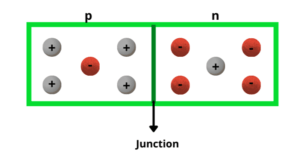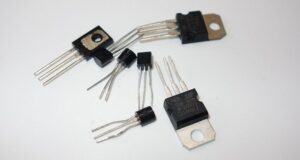Light Emitting Diode :-
It is a heavily doped p-n junction which under forward bias emits spontaneous radiation. The diode is encapsulated with a transparent cover so that emitted light can come out.
LEDs are biased such that the light emitting efficiency is maximum. The reverse breakdown voltages of LEDs are very low, typically around 5 volt.

LED that can emit red, yellow, orange, green and blue light are commercially available.
The semiconductor used for fabrication of visible LED must at least have a band gap of 1.8 eV. The compound Gallium arsenide – phosphide is used for making LED of different colours.
Advantages of Light Emitting Diode (LED) :-
- Low operational voltage and less power.
- Fast action and no warm of time required.
- The bandwidth of emitted light is 100 500 (nearly monochromatic).
- Fast on-off switching capability.
- Long life and ruggedness.
Photodiode :-

It is a special purpose p-n junction diode fabricated with transparent window to allow light to fall on the diode. It is operated under reverse bias.
- When the photodiode is illuminated with light (photons) with energy greater than the energy gap of semiconductor, then electron-hole pairs are generated due to the absorption of photons. The diode is fabricated such that the generation of electron hole pairs takes place in or near the depletion region of the diode.
- Electrons are collected on n-side and holes are collected on p-side giving rise to an EMF (electromotive force).
- When an external load is connected, current flows. The magnitude of photocurrent depends on the intensity of incident light.
- It is easier to observe the change in the current with change in the light intensity, if a reverse bias is applied. The photodiode can be used as a photo detector to detect optical signals.




